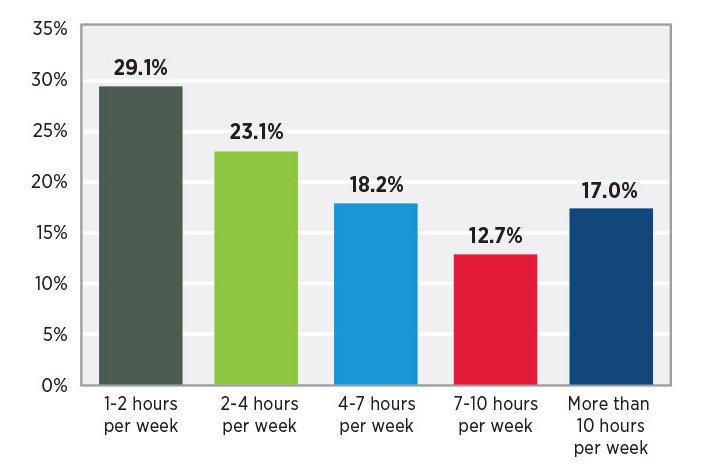
More than seven hours a week are spent watching videos online by many, and at the top of the list of content watched are movies and TV shows. The news of cable demise may also be exaggerated.
The new report, State of Online Video, published by Limelight Networks, reveals average global viewership jumps to five hours, 45 minutes per week, with millennials leading the shift at seven hours, three minutes per week. That’s a 34 percent increase on global online video viewing.
The increasing shift to online viewing video is a global trend with viewers in India, Singapore, and the United States spending the most time watching online videos, averaging seven hours, seven minutes; six hours, 37 minutes; and six hours, 35 minutes per week, respectively. Germany had the lowest rate of online video viewership at four hours, 14 minutes, and nearly half of respondents watching only one to two hours per week.
The annual report about consumer’s changing habits also refers that the average global viewer subscribes to one or more video on-demand services. Movies and TV shows lead online viewing, indicates the report. Globally, viewers spend more time online watching movies than any other type of content. However, viewers in South Korea and the U.K. watch TV shows most often. When viewed by gender, men prefer movies, while women prefer TV shows.
The report also includes interesting data that reflects the way consumers react to online video and the preferences of the market in terms of viewing devices and types of content. There are also some surprises regarding cable, which some say is doomed.

One trend to be watched is the growing interest in eSports. Although traditional sports programming was the third most watched type of online video content by men, males 18-25 watch more eSports and online video gaming than traditional sports programming. This tendency is probably going to rise, as eSports becomes more popular and accepted as “normal”.
Smartphones are the preferred device for millenials and are gaining popularity. The report indicates that “although computers and laptops are the primary online video viewing device globally, smartphones are the preferred device in India and South Korea”.
Millenials are, in fact, the segment that watches the most video online. According to the research, “younger people watch the most online video, with viewers 18-25 averaging seven hours, 18 minutes per week and people 26-35 watching six hours, 53 minutes per week. Viewers 60 and older only watch three hours, 46 minutes per week.”
Cable is many times mentioned as being in decline, but the report suggests that cable subscribers keep the cord and go further Over-the-Top. In fact, despite cord-cutting concerns, the report uncovered that people subscribing to cable have twice as many over-the-top subscription services than those without cable.
When it comes to subscription to online streaming services, United States and India lead. Consumers globally are signing on to streaming with 30 percent of viewers noting they subscribe to two or more services. Subscription rates are highest in the U.S. and India, where 50.8 percent and 46.8 percent, respectively, subscribe to two or more services. In comparison, only 16.7 percent of respondents in France subscribe to two or more services.
“With the proliferation of online video content, viewers are moving away from traditional broadcast television viewing and have increasing expectations for broadcast-quality experiences,” said Michael Milligan, Senior Director at Limelight Networks. “Our research over time has shown a clear increase in expectations and decreasing patience with poor quality experiences.”
Consumers have so much choice, in fact, that they won’t waste time on a poor experience. Rebuffering (when a video pauses during playback to load more content) is the top frustration when viewing videos online – surpassing poor video quality and limited device access. If a video rebuffers twice, more than 61 percent of viewers will stop watching. Only 15 percent will continue watching after rebuffering happens for a third time.
The “State of Online Video” report is based on a survey of 4,000 consumers ranging in age, gender, and education in France, Germany, India, Philippines, Singapore, South Korea, the U.K., and the U.S. Download the complete “State of Online Video” report.

